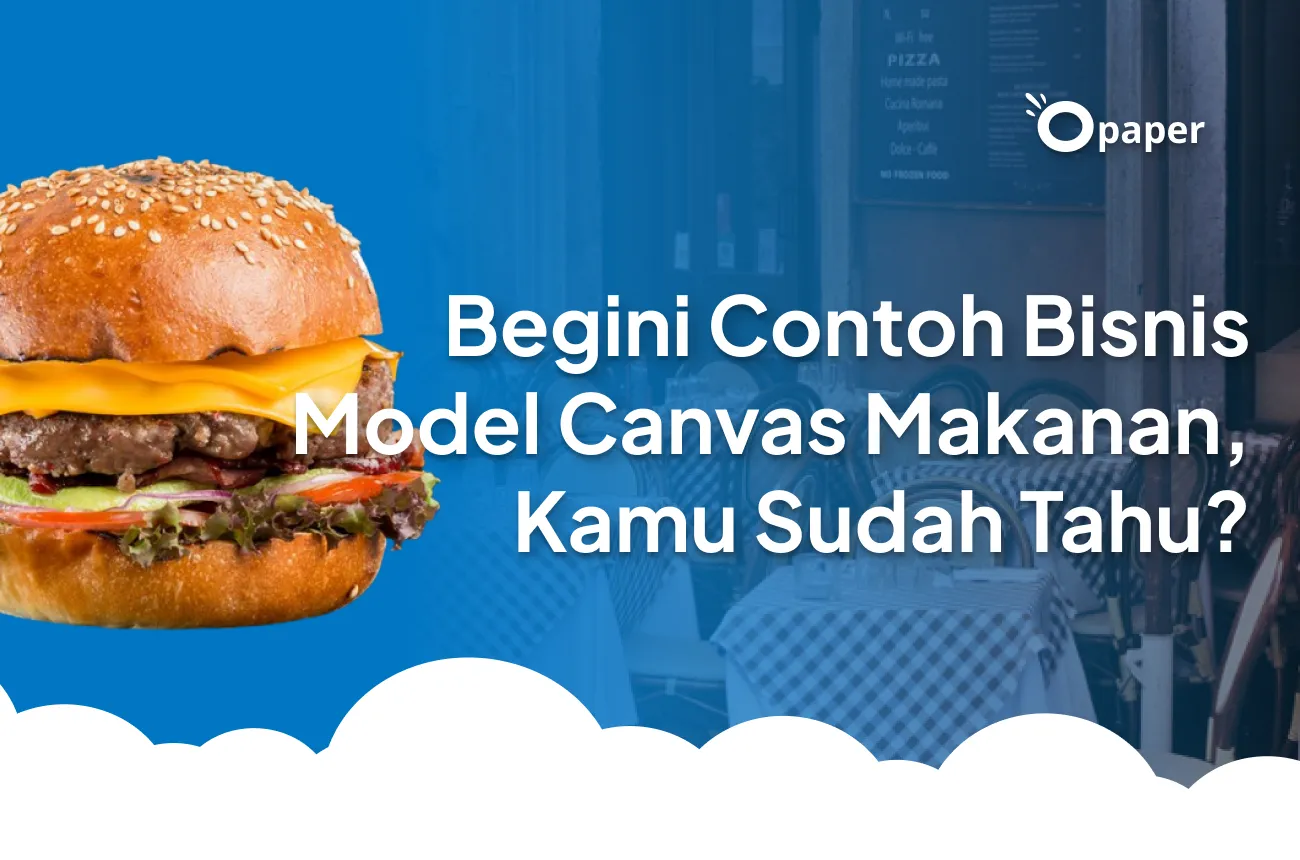If you're looking to start a food business, have you created a clear and structured business plan? One of the best ways to map out all the essential components of your food business is by using a Business Model Canvas (BMC).
In this article, we'll discuss an easy way to create an effective Food Business Model Canvas, so you can design your business more structurally and measurably. Let's get started!
What is a Business Model Canvas?
The business model canvas is a tool used to describe how a business operates. This concept was first introduced by Alexander Osterwalder in 2008.
This model consists of nine elements that cover market segments, value propositions, distribution channels, customer relationships, key resources, key activities, key partners, costs, and revenue.
So the Business Model Canvas (BMC) is a kind of management strategy used by companies to create business plans simply on one page. It's not like a typical business plan that needs many pages.
The Business Model Canvas can map everything from target consumers, finances, and infrastructure in just one sheet.
Although more concise, each sheet still must have several essential elements that support each other. So, if presented well, it can flow smoothly from one component to another.
The business model canvas is very useful for business owners who want to build their business better. In the food business, using a business model canvas can help business owners understand their customers, determine the right pricing, and optimize their operations.
Read: Easy! Here's How to Make a Simple Business Plan
9 Elements of the Food Model Canvas
Here are the elements of the business model canvas that can inspire you in building your own food business:
Market Segments
Market segments are groups of customers who have the same needs and desires. Examples of market segments for a food business are children, teenagers, adults, and the elderly.
Value Proposition
The value proposition is the offering made to customers. Examples of value propositions for a food business are healthy and delicious food, a diverse menu, and affordable prices.
Distribution Channels
Distribution channels are ways to deliver products or services to customers. Examples of distribution channels for a food business are physical stores, delivery services, and online ordering.
Customer Relationships
Customer relationships are how a business interacts with its customers. Examples of customer relationships for a food business are loyalty programs, good customer service, and customer feedback.
Key Resources
Key resources are assets used by a business to run their operations. Examples of key resources for a food business are the kitchen, raw materials, and employees.
Key Activities
Key activities are tasks that need to be done to run business operations. Examples of key activities for a food business are cooking, serving, and cleaning.
Key Partners
Key partners are companies or individuals that help a business run their operations. Examples of key partners for a food business are raw material suppliers, delivery service providers, and equipment providers.
Costs
Costs are expenses incurred by a business to run their operations. Examples of costs for a food business are raw material expenses, electricity costs, and employee wages.
Revenue
Determine the revenue earned from selling food or additional services, such as catering or delivery.
Example of a Food Model Canvas

Tips for Creating an Effective Business Model Canvas
Here are some tips for creating an effective Business Model Canvas:
Understand the BMC concept thoroughly
Before starting to create a BMC, make sure you understand each element that should be included and how each element relates to one another.
Don't be too attached to the format
Although there is a standard format for the Business Model Canvas, don't be afraid to modify it according to your business needs. The important thing is to ensure all elements are covered and well-connected.
Conduct market research
Make sure you have a clear understanding of your target market and the competition around. This will help you fill in the BMC with more accurate information.
Involve your business team
Creating a Business Model Canvas is not a one-person job. Involving your business team can help produce a more accurate and detailed BMC.
Don't hesitate to experiment
If the initial Food Model Canvas you create doesn't work, don't hesitate to change it. The BMC is a flexible tool, so use it to experiment and find the most effective business model for your business.
If your business is already established, also pay attention to business operations, which often cause businesses to lose money. It's a shame if the business concept is good, sales are up, but operations suddenly balloon. To avoid this risk, use the Opaper Cashier Application to make business operations more efficient.
You can download the Opaper app on the Play Store and App Store. You can also request a demo for more information.

